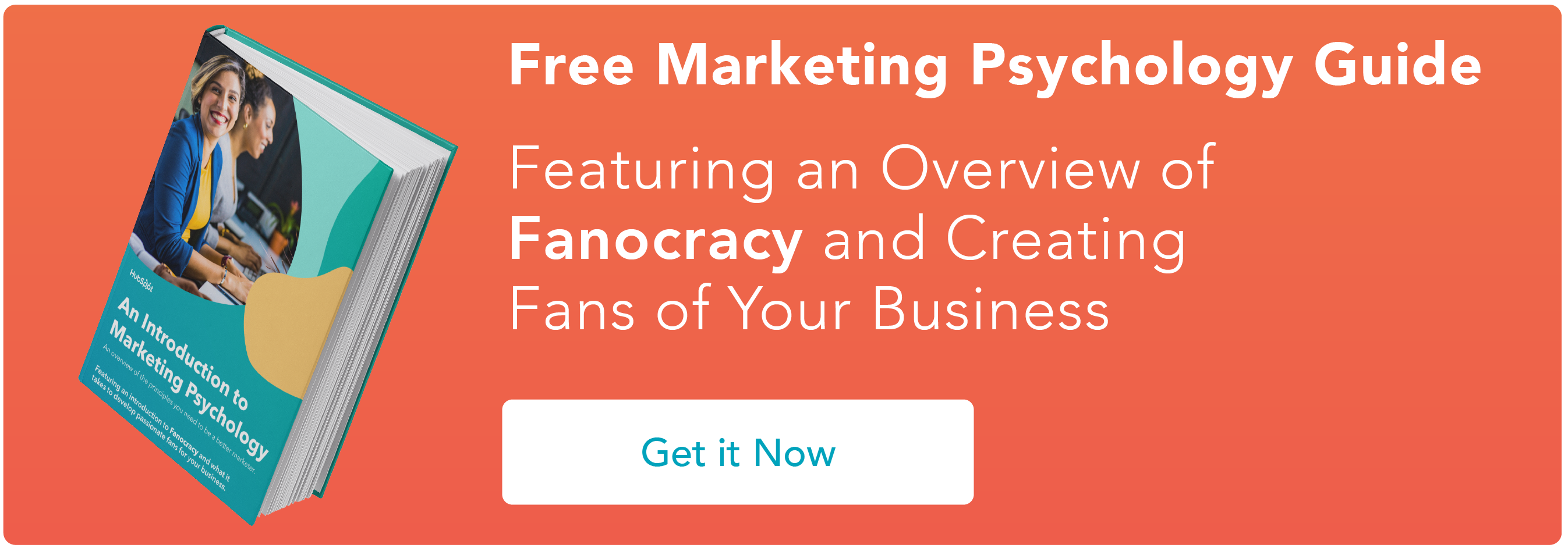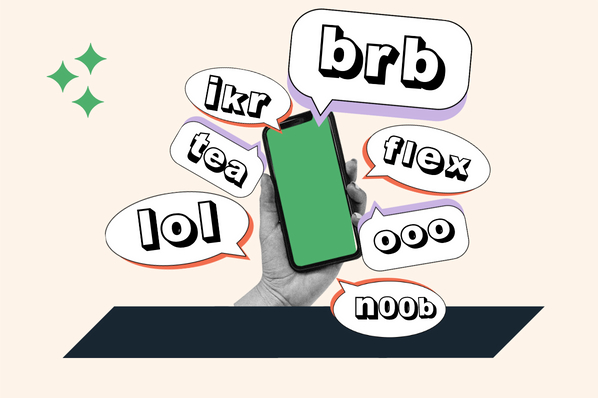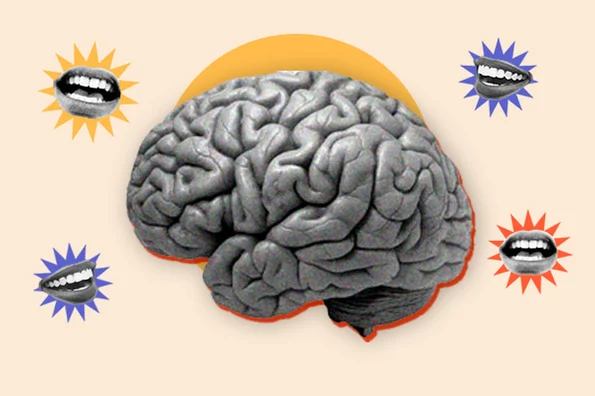One key part of being a great marketer is understanding how (and why) people think and act the way they do. It's much harder to create compelling content marketing, for example, if you don’t know why it would be compelling to your audience in the first place.

Before you jump into the tactical nitty-gritty of marketing, it’s really helpful to understand how people operate … which is essentially what the entire field of psychology attempts to explain. Understanding some key principles of psychology can take your marketing from good to amazing, all because the right audience is reading and identifying with it (and most likely converting on it, too).
Download our free guide to marketing psychology here for more tips on how to use psychology in your marketing.
To help you attract, convince, and convert more people with your marketing, you should know the following lessons about psychology.
Psychology and Marketing: 10 Important Principles of Psychology You Should Use
1) Priming
Have you ever played the game where one person says a word, and the other immediately responds with the first thing that comes to mind?
That's kind of how priming works. You're exposed to one stimulus, and it affects how you respond to another stimulus. Psychology Today gives the example of two groups of people reading the word "yellow" followed by either "sky" or "banana." Because people have a semantic association between the fruit and its color, the "yellow-banana" group will recognize the word "banana" faster than the "yellow-sky" group recognizes "sky."
.png)
How to Use Psychology in Marketing
Access the guide to learn more about psychology.
- Turn customers into fans.
- Understand Maslow's hierarchy of human needs.
- Understand how marketing can influence how people think, feel, and behave.
Download Free
All fields are required.
.png)
What's this got to do with marketing? Lots. Using subtle priming techniques, you could help your website visitors remember key information about your brand -- and maybe even influence their buying behavior.
It's been tested before. In a study by Naomi Mandel and Eric J. Johnson, researchers manipulated the background design of a website to see if it'd affect consumers' product choices. Participants were asked to choose between two products in one category (like a Toyota vs. a Lexus). According to Psychology Today,"they found that visitors who had been primed on money (the website’s background was green with pennies on it) looked at price information longer than those who had been primed on safety. Similarly, consumers who had been primed on comfort looked at comfort information longer than those primed on money."

Source: Journal of Consumer Research
So if you're trying to make use of priming in your marketing, think about the small details. They could be the difference between someone buying your highest product price point and bouncing from your page.
2) Reciprocity
Introduced in Dr. Robert Cialdini’s book, Influence: The Psychology of Persuasion, the concept of “reciprocity” is simple -- if someone does something for you, you naturally will want to do something for them.
If you've ever gotten a mint with your bill at a restaurant, you've been the victim of reciprocity. According to Cialdini, when servers bring a check to their patrons without a mint, the diners will tip according to their perceptions of the service given. With one mint, the tip jumps up 3.3%. Two mints? The tip jumps "through the roof" to roughly 20%.
In your marketing, there are a lot of ways to take advantage of reciprocity. You don’t have to be rolling in dough to give something away; it can be anything from a branded sweatshirt, to an exclusive ebook, to a free desktop background, to your expertise on a difficult subject matter. Even something as simple as a hand-written note can go a long way in establishing reciprocity. Just be sure you're giving away the free thing before you ask for something in return.
3) Social Proof
Most marketers are aware of this concept already, but it was too important to leave out from this list. If you're not familiar with it, social proof is the theory that people will adopt the beliefs or actions of a group of people they like or trust. In other words, it’s the “me too” effect. Think of this like an awkward middle school dance -- few people want to be the first one on the dance floor, but once a few people are there, everyone else wants to join in. (Keep in mind, this desire to conform doesn’t go away when you get older and less bashful about your dance moves.)
One easy way to make the most of social proof is on your blog. If you're not already, use social sharing and follow buttons that display the number of followers your accounts have or the number of shares a piece of content has. If those numbers are front and center and you already have a few people sharing your post, people who stumble on your post later will be much more likely to share.
4) Decoy Effect
You'll often see this effect in pricing models -- one price point is intentionally included to entice you to choose the most expensive option.
In Dan Airley's famous TED talk, "Are we in control of our own decisions?", he describes an ad from The Economist outlining their latest subscription packages. Here's what they offered:
- Online subscription: $59
- Print subscription: $125
- Online and print subscription: $125
Crazy, right? You could get the print only subscription and the online and print subscription for the same price. Why would they offer that?
That's what Airley thought, too. He reached out to the folks at The Economist, but he never got a straight answer from them.
So he decided to run his own study with 100 MIT students. He gave them the pricing packages outlined above and asked which one they'd want to buy. When all three options were there, students chose the combo subscription -- it was the best deal, right? But when he removed the "useless" option (the print subscription for $125), the students preferred the cheapest option.
Turns out that middle option wasn't that useless after all -- it gave students a frame of reference for how "good" the combo deal was and enticed them to pay more for that deal.
So if you're looking to increase conversions on a landing page with two options, you might want to add a third. It could help increase the conversion rate of the option you'd ultimately want people to take.
.png)
How to Use Psychology in Marketing
Access the guide to learn more about psychology.
- Turn customers into fans.
- Understand Maslow's hierarchy of human needs.
- Understand how marketing can influence how people think, feel, and behave.
Download Free
All fields are required.
.png)
5) Scarcity
Ever gone to buy airline tickets and seen a tagline that says “Only 3 seats left at this price!” Yup, that’s scarcity (another Cialdini concept). This psychology principle goes back to the simple formula of supply and demand: The more rare the opportunity, content, or product is, the more valuable it is.
In 1975, Worchel, Lee, and Adewole conducted a study to see how scarcity affected people's perception. At the start of the study, they asked people to rate chocolate chip cookies. According to an article by my colleague Lanya Olmstead that describes the experiment, "[The researchers] put 10 cookies in one jar, and two of the same cookies in another jar. The cookies from the two-cookie jar received ratings twice as high as the 10 cookie jar even though the cookies were exactly the same."
But if you want to properly use this principle, you need to be careful how you word it. If you approach the scarcity concept as if there used to be a ton of a product or service, but due to popular demand there’s a few left, people will be very receptive. On the other hand, if you approach it from the angle that there are only a few products total, so get it now, the principle won’t be as effective. Check out this post from Nir and Far for a deeper explanation on why that distinction is important.
6) Anchoring
Ever wondered why it's so hard to resist a sale at your favorite clothing store?
Often, it has to do with anchoring -- people base decisions on the first piece of information they receive. So if my favorite store typically retails jeans for $50, but I find them on sale for $35, I'll be ecstatic. "I just got a crazy deal on these jeans," I'll think. I'll probably even buy them. But if my friend typically shops for jeans that are $20, she won't be nearly as impressed.
For marketers, anchoring is important to know -- especially if you're ever running a sale. You'll want to clearly state the initial price of the product (this is "setting" the anchor), and then display the sale price right next to it. You might even explain how much of a percentage off your customers will receive with the sale.

Image credit: Express
7) The Baader-Meinhof Phenomenon
Ever heard about a product and then start seeing it everywhere you look? You can thank the The Baader-Meinhof Phenomenon. It starts happening after you encounter something for the first time, and then you start noticing it cropping up in everyday life. Suddenly you see ads for the product every time you watch TV. And when you go to the grocery store, you happen to walk down the aisle and spot it. And alllllll of your friends all have the product.
It's weird right? Here's why you're suddenly seeing this new thing everywhere.
According to PS Mag, this phenomenon (also called "the frequency illusion") is caused by two processes. "The first, selective attention, kicks in when you’re struck by a new word, thing, or idea; after that, you unconsciously keep an eye out for it, and as a result find it surprisingly often. The second process, confirmation bias, reassures you that each sighting is further proof of your impression that the thing has gained overnight omnipresence."
For marketers, this phenomenon is precisely why nurturing is incredibly important. Once someone starts noticing your brand (aka clicking around on your website), you'll want to help them start seeing you "everywhere." Send them targeted nurturing emails and retargeting ads based on their behavior, and you could increase the possibility of them converting.
8) Verbatim Effect
According to a study by Poppenk, Joanisse, Danckert, and Köhler, people are more likely to remember the gist of what someone said, not the specific details. So when you attend a session on how to blog for your business, you're most likely going to remember details like "Have another person edit your work," not "Send a Google Doc three business days ahead of time to a peer so they can edit your work. Don't forget to use Track Changes so you know what you missed!"
They called this the "verbatim effect." And it can have a huge effect on how your content performs.
To begin with, people are spending less and less time actually reading online. According to data from Chartbeat, more than half of your visitors will spend less than 15 seconds on your site. So if people aren't reading your content and not likely to remember specific details, what's a marketer to do?
I'd recommend spending even more time than you already are on perfecting your headline. Not only should it be search- and sharing-friendly, but it should also accurately describe what's in your article. This way, when people are looking for more information on a given topic, they'll think of that one helpful article they read a while ago and Google the topic to find it again. If you've done the work, you should appear in the search results. If you need some help writing compelling headline copy, check out this post on our blog.
.png)
How to Use Psychology in Marketing
Access the guide to learn more about psychology.
- Turn customers into fans.
- Understand Maslow's hierarchy of human needs.
- Understand how marketing can influence how people think, feel, and behave.
Download Free
All fields are required.
.png)
9) Clustering
People have a limited amount of space in their short-term memory. In fact, most people can only remember seven pieces of information (plus or minus two pieces in any given situation) at a time.
To cope, most people tend to cluster similar pieces of information together. For example, if you had a whole grocery list of random items, most people would tend to mentally group items into certain categories (dairy, grain, meat, etc.) to be able to better remember what exactly was on the list.
So when you're creating content, keep clustering in mind. How can you design and lay out your content to increase memory retention? One way to do it is by grouping similar topics together -- either under numbered bullet points or with different header sizes. Besides being much easier to scan, your writing will be much easier to remember and recall down the road -- especially if you’re creating long lists of content.
10) Loss Aversion
Loss aversion means pretty much exactly what it sounds like: Once someone has something, they realllllly don't like to lose it.
When Daniel Kahneman studied this concept, participants were given mugs, chocolate, or nothing. Then, they were asked to make a choice, they were give two options: If they were given an object, they could trade their objects, or if they were given nothing, they could choose one of the two items. The result? Roughly half of the participants who started with no items chose mugs, but 86% of those given mugs to begin with stuck with that item.
Moral of the story? People don't like to lose what they've already gained.
Though this could open up some semi-sketchy doors for certain types of marketers, loss aversion could have a significant factor in freemium products and increased product adoption. For example, you could ungate a feature for the free version of your product for a certain amount of time. After that time period is up, that feature could be removed unless you upgrade to becoming a paying customer. While you certainly have to be careful how you play to this psychological need, loss aversion is a very important concept for every marketer to know.
What other psychology studies and concepts do you swear by? Share your favorites in the comments.
Editor's Note: This post was originally published in July 2013 and has been updated for freshness, accuracy, and comprehensiveness.






![How Neuromarketing Can Revolutionize the Marketing Industry [+Examples]](https://www.hubspot.com/hubfs/neuromarketing_1.webp)



